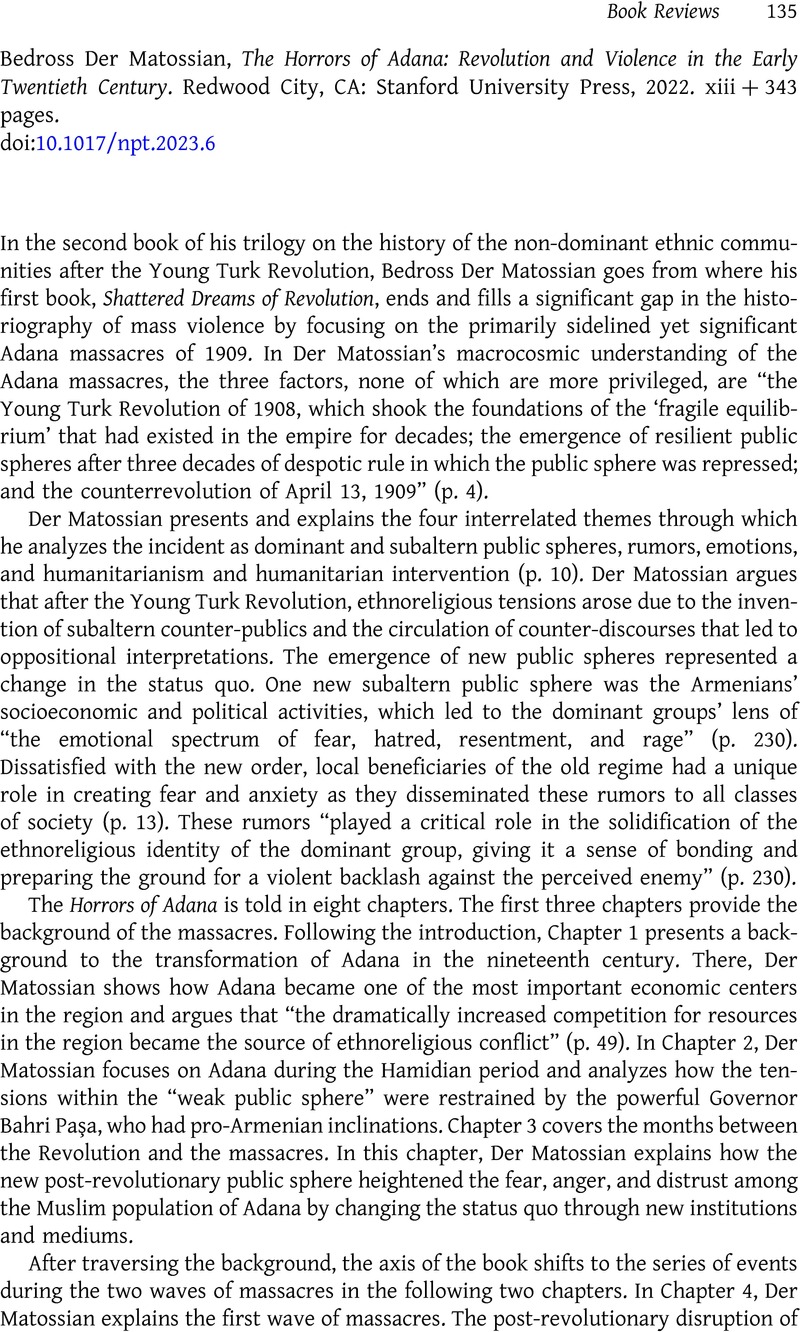No CrossRef data available.
Article contents
Bedross Der Matossian, The Horrors of Adana: Revolution and Violence in the Early Twentieth Century. Redwood City, CA: Stanford University Press, 2022. xiii + 343 pages.
Review products
Bedross Der Matossian, The Horrors of Adana: Revolution and Violence in the Early Twentieth Century. Redwood City, CA: Stanford University Press, 2022. xiii + 343 pages.
Published online by Cambridge University Press: 15 August 2023
Abstract
An abstract is not available for this content so a preview has been provided. Please use the Get access link above for information on how to access this content.

- Type
- Book Review
- Information
- Copyright
- © The Author(s), 2023. Published by Cambridge University Press on behalf of New Perspectives on Turkey



